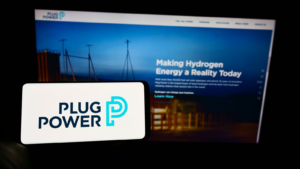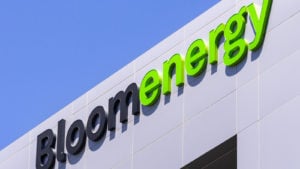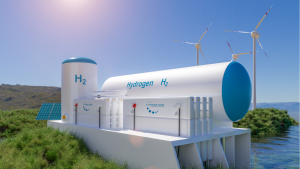Want to Get Rich? 3 Game-Changing Hydrogen Stocks to Buy Right Now
Hydrogen energy is slowly developing its space within the world’s energy grid. Unfortunately, the newfound demand for cleaner energy has not reinvigorated investment into hydrogen energy when compared to solar or wind energy. A lot of this has to do with costs. “Grey hydrogen,” which is derived primarily from natural gas and coal represents 98% of all hydrogen while “green hydrogen” remains considerably more expensive. Having said that, how does this affect hydrogen stocks?
The Inflation Reduction Act passed by the Biden Administration in 2022 provides both tax incentives and subsidies to clean energy projects. The act had initially caused investors to give hydrogen stocks another look. However, now as we are in the second half of 2023, some equity investors have become impatient with the deteriorating near-term earnings potential of some hydrogen companies. In this article, we will explore three hydrogen stocks with promising hydrogen businesses that equity investors have started to neglect. With some patience, these companies have the ability to make shareholders rich.
Game-Changing Hydrogen Stocks: Plug Power (PLUG)

Plug Power (NASDAQ: PLUG) made my prior list on hydrogen stocks and given where the stock has plummeted recently, I believe the company deserves another entry. The company is the largest supplier of liquid hydrogen, and produces hydrogen fuel cells for mobility applications. Hydrogen fuel cells are leveraged primarily for replacing conventional batteries in equipment and vehicles powered by electricity. Plug Power’s hydrogen fuel cells mainly service supply chain and logistics industries, providing hydrogen-powered forklifts, trucks, buses and drones. This can both reduce greenhouse gas emissions and operating costs. To complement its fuel cell products, Plug Power has also built an expansive network of more than 50,000 green hydrogen refueling stations.
The hydrogen fuel cell developer has successfully formed a number of strategic partnerships with major players in the mobility and logistics sector. This includes Amazon (NASDAQ:AMZN), Walmart (NYSE:WMT) and Airbus (OTCPK:EADSY). These partnerships can help to propel Plug Power to record levels of revenue growth.
In 2023, Plug Power’s shares are down 30%, despite beating revenue estimates consecutively. Investors are perhaps too focused on bottom line profits, and have grown impatient. The company’s enterprise value is trading at around 3.1 times forward EBITDA. At this attractive valuation, investors interested in investing in the burgeoning hydrogen market should take notice.
Bloom Energy (BE)

Bloom Energy (NYSE:BE) is another pure-play innovator in the hydrogen industry. The company specializes in solid oxide fuel cell (SOFC) technology, which can generate electricity from various fuels, including natural gas, biogas and hydrogen. The “Bloom Energy Server,” in essence, produces electricity through an electrochemical process. This reduces the need for combustion and thereby reduces emissions. Bloom’s Energy Server can provide reliable, 24/7 power, making them an attractive option for businesses and institutions that require constant power supply. The server also operates independently of the grid. This can be a crucial advantage during power outages or in areas with unstable grid infrastructure.
Bloom Energy had been impressing investors in the last few years with its financial performance and product innovation. In 2022, the company posted a record revenue of $1.2 billion, up 23% year-over-year, and a gross margin of 21%. In July, Bloom Energy announced the groundbreaking launch of Series 10, 10MW fuel cell offering. Despite market volatility surrounding the company’s earnings this year, Bloom Energy has showed effectiveness in scaling its products. With profitability margins expanding year-over-year, this could provide ample share appreciation to patient investors.
Ballard Power Systems (BLDP)

Ballard Power Systems (NASDAQ:BLDP) focuses on hydrogen fuel cell solutions for heavy-duty vehicles, such as buses, trucks, trains and ships. In particular, Ballard develops proton exchange membrane (PEM) fuel cell products, and has been for more than 30 years. It has expanded its presence across various end-markets, including transportation (buses, commercial trucks, trains and marine vessels), stationary power and portable power. This diversity allows them to reduce dependence on any single sector.
Ballard Power Systems has unfortunately been impacted by slumping demand in both Europe and China for hydrogen fuel cell products. Both regions are in the midst of their own respective economic slowdowns, which could possibly dent demand in novel technology like hydrogen fuel cells. In 2022, the company generated $84 million in revenue, down 20% year-over-year. In 2023, Ballard Power Systems has also experienced quarterly revenue decline for the aforementioned reasons. However, these headwinds should be seen as short-term. As the global economy recovers, demand for hydrogen could pick up. With Ballard’s shares down more than 12% YTD, investors could immensely profit from this opportune entry point.
On the date of publication, Tyrik Torres did not have (either directly or indirectly) any positions in the securities mentioned in this article. The opinions expressed in this article are those of the writer, subject to the InvestorPlace.com Publishing Guidelines.

